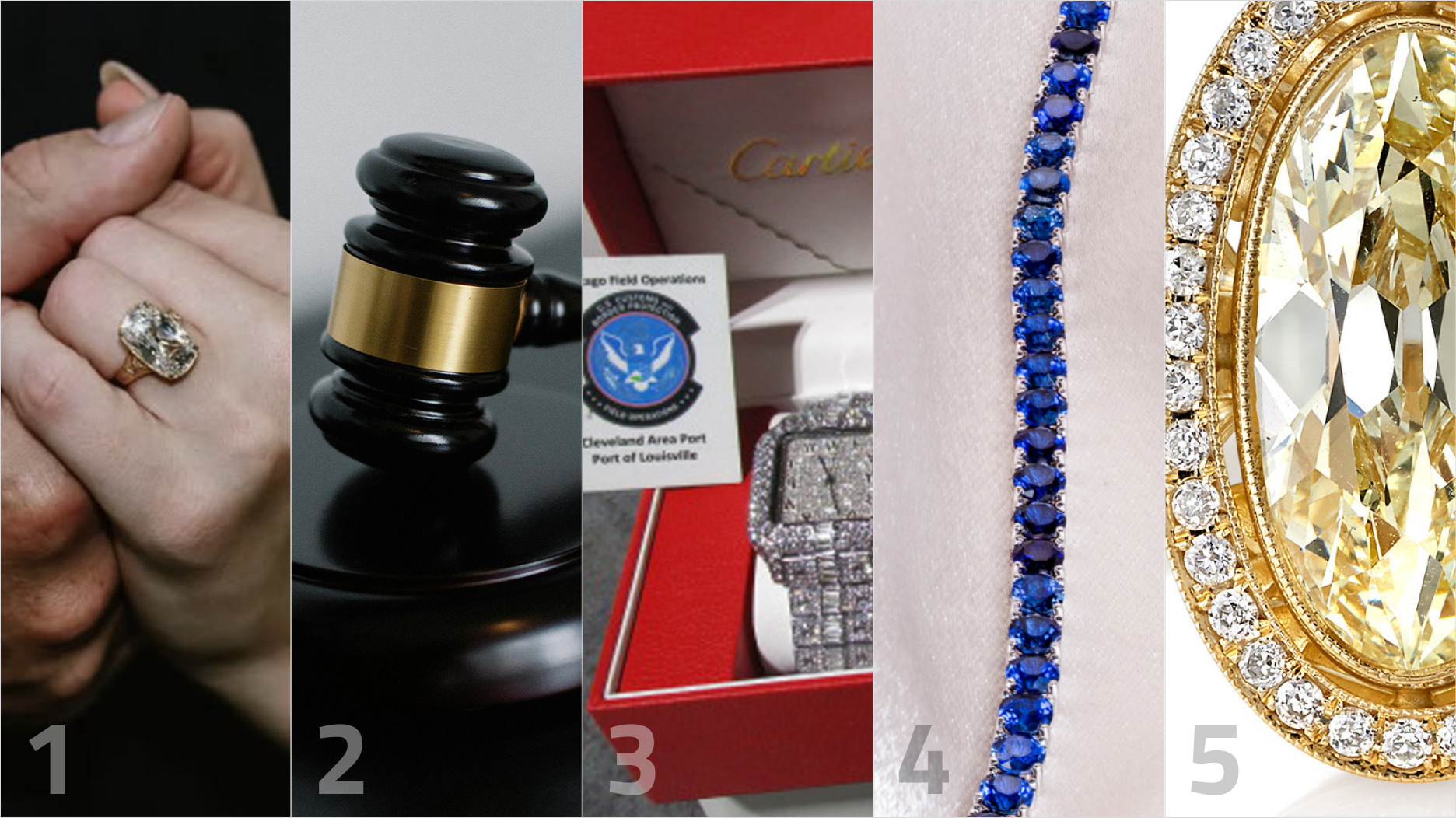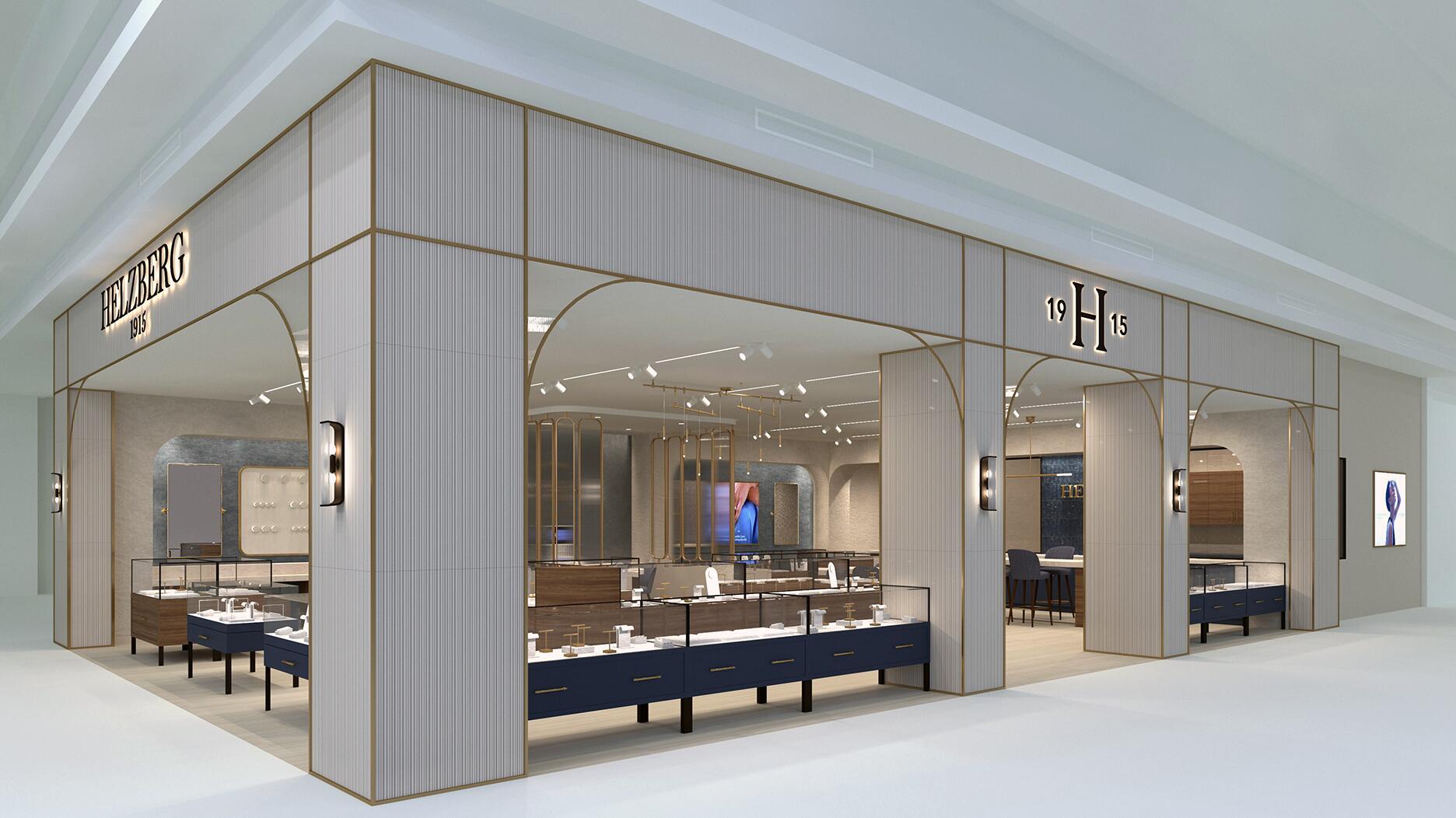Executive Chairman Richard Baker will take over the role as rumors swirl that a bankruptcy filing is imminent for the troubled retailer.
7 Post-Tucson Predictions and Observations
Senior Editor Brecken Branstrator says spinel and garnet are hot while the end of the shows were not.

Tucson had a slightly different energy this year.
Was it because it was so cold and we didn’t get as much of the outdoor time as we’re used to? Did the current uncertain environment have everyone playing it a little safer when it comes to traveling and shopping?
I don’t really know but, even in its off years, Tucson still seems to be at the top of the work travel list for all who go.
The shows are more laid-back than others, you get the chance to see gemstones you’ve only ever heard of and there is, of course, the spectacular scenery in even the coldest of years.
I’m grateful to have been able to spend another fantastic week there for the annual gem shows. Here are a few insights I noted after walking the (many) show floors.
1. The shows seemed to end quieter than normal.
I spent my first day just walking around GJX and especially AGTA GemFair, chatting with people and looking at stones. The aisles during opening day, especially at GemFair in the convention center, seemed pretty busy.
My last full day in Tucson, that Saturday, I saved for just walking the shows again to get a feel for how things went, and it felt like a ghost town almost everywhere.
The last few days of the industry shows in Tucson generally feel slower, as attendees filter out to the other gem and mineral shows in different parts of the city, but this year felt different.
GemFair seemed quiet, but the aisles in GJX were fairly empty, and even weirder, when I ventured over to the Pueblo Gem & Mineral Show at the Ramada (which used to be the Riverpark Inn), I felt like I was one of the only people there.
Did people cut their trips back? Did they finish their shopping earlier? I’m not sure what the reasoning was, but luckily it didn’t seem to have too negative an effect on exhibitors, because …
2. People were still buying.
By the time the weekend rolled around, there had been plenty of time for shopping. So despite the quiet end, plenty of people still seemed happy, or at least “OK,” with how the shows turned out.
Despite an uneven holiday season and anxiety about whether the political climate will affect spending, it was still good to hear that attendees were, indeed, buying,
3. I love spinel and, it turns out, everyone else does too.
Was it just me, or did almost every exhibitor who was selling spinel say the gemstone was selling like hotcakes?
And it’s not just the beautiful pinks that people are lusting after; perhaps just as hot are the steely grays, gray-blues and gray-purples.
RELATED CONTENT: 10 Things I Learned at the AGA’s Tucson ConferenceFor a long time, people have said spinel is one of the most underrated gems in the market, but if Tucson 2019 is any indication, I don’t think we can label them the underdogs anymore.
4. Garnets are on their way up.
A gemstone I think we can still call underrated is the garnet.
The gem comes in a rainbow of colors ranging from some of the most vivid oranges and greens found in the colored stone spectrum to the romantic purples, fuchsias and maroons.
Combine that with its (general) affordability, and the stone offers one of the best deals in the marketplace, in my opinion.
RELATED CONTENT: Amanda’s Style File—Garnets GaloreIt made me happy to hear how many people showed interest in garnets this year, especially the pinks and deep reds mined in Tanzania, as well as the saturated, luscious “grape” garnet.
Could 2019 be a turning point for January’s birthstone? I, for one, sure hope so.
5. Two shapes stood out.
Cutting and shapes are really having a moment in the colored stone world; they’re another way for designers and brands to create unique pieces that set them apart.
For me, there were two favorites that popped up several times in Tucson this year: hexagon cuts and slices.
The latter isn’t new, as slices have been growing in popularity for a while now, but I loved to see several booths carrying stones with hexagon cuts. The shape adds interest and a cool factor to gemstones.
View this post on InstagramA post shared by Columbia Gem House (@columbiagemhouse) on Mar 1, 2019 at 2:45pm PST
6. Edgy is in.
This point originates from a conversation I had with Kimberly Collins at GemFair; she used “edgier” to talk about trends in the market. I loved it so much I’m borrowing it here.
Buyers are turning to colored stones to help give their jewelry a story, true, but it’s going beyond that now.
They’re not only looking for great stones, but also now the cool cut, the interesting shape—like the Geocuts above from Columbia Gem House, which the company said generated a lot of interest in Tucson—or the color that’s seen nowhere else, and the sector is answering that demand.
We’ve known it for a while, but I’m happy to hear more people are starting to understand: Color is cool.
7. Collaboration is needed to unify responsible sourcing meaning and efforts.
One thing that will come as a surprise to no one: Tucson 2019 was buzzing with “responsible sourcing” discussions.
It seemed like every other panel, education session or conversation revolved around responsible sourcing efforts or needs.
RELATED CONTENT: Gübelin’s Blockchain for Gems Now Open to the IndustryPlenty of people in the industry want to get on board with it; one doesn’t have to look hard to see the interest.
The many conversations around responsible sourcing, ethical sourcing, sustainability and the like, are definitely a move in the right direction.
But now we’re at a place where I wonder: Are there too many separate conversations happening? Is it creating more confusion than aid, particularly when the vocabulary means different things to different people?
I think we’re at a critical point where the trade has to get on the same page.
We need to establish exactly what it would mean for a company or brand to be able to use “responsible sourcing,” “ethical sourcing” or “sustainability,” and in vocabulary that won’t risk pushing out any of the smaller players along the supply chain.
It’s critical for both the industry’s understanding and to help communicate the messaging with consumers.
The Latest

Mohr had just retired in June after more than two decades as Couture’s retailer liaison.

Shekhar Shah of Real Gems Inc. will serve as president of the Indian Diamond & Colorstone Association in 2026.

How Jewelers of America’s 20 Under 40 are leading to ensure a brighter future for the jewelry industry.

This year’s good luck charm features the mythical horse Pegasus, and is our first Piece of the Week of the new year.


As part of the leadership transition, Sherry Smith will take on the role of vice president of coaching strategy and development.

It marks the third time the country has headed the Kimberley Process. Ghana will serve as vice chair.

Roseco’s 704-page catalog showcases new lab-grown diamonds, findings, tools & more—available in print or interactive digital editions.

The new Bulova x Stetson designs highlight two animals often associated with the American West—the bison and the Texas Longhorn.

Its residency at Yamron Jewelers will run through May 2026.

From influential executives to innovative designers, we pay tribute to the people we said goodbye to this year.

The retailer is expanding into areas with large Indian and South Asian populations.

The Italian brand has opened its first flagship amid the peaks of the Dolomites in Madonna di Campiglio, Italy.

The new curation at the Natural History Museum of Los Angeles County showcases rare gem and mineral specimens in their uncut, natural state.

The couple pleaded guilty to concealing at least $127 million in cash transactions at its precious metals businesses.

Consumers shared concerns about prices, inflation, tariffs, trade, and politics in the survey’s write-in response section.

In February 2026, the auction house will move its headquarters to the former Steinway Hall, a neoclassical landmark on Billionaires’ Row.

The new show will take place Jan. 23-25, 2026.

The former BHP Billiton leader and Gemfields chairman is remembered for his influential leadership throughout his 50-year mining career.

The LVMH-owned brand has partnered with the costume design union to revamp its award for 2026.

The luxury titan inked a deal to acquire an initial minority stake in the jewelry manufacturer with a pathway to full ownership by 2032.

The company’s curation of unsigned vintage and estate jewelry debuted at the Bloomingdale’s in Costa Mesa, California.

In the recent multi-shipment seizure, CBP also found counterfeit Audemars Piguet, Moncler, and Chrome Hearts items.

Jewelers of America execs and National Jeweler editors discuss tariffs, the sky-high gold price, and the engagement that broke the internet.

The luxury goods company said founder Ippolita Rostagno will remain at the brand’s helm.

Laura Burdese, who joined the Italian luxury brand in 2022, will take on the role in July.

The National Jeweler editors revisit the most noteworthy industry happenings and design trends from 2025.


























